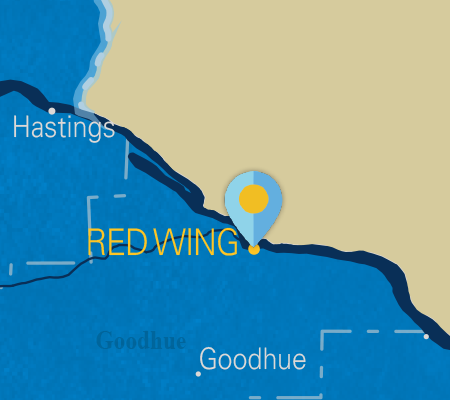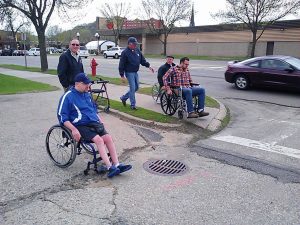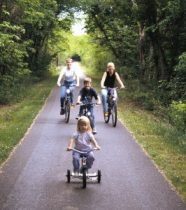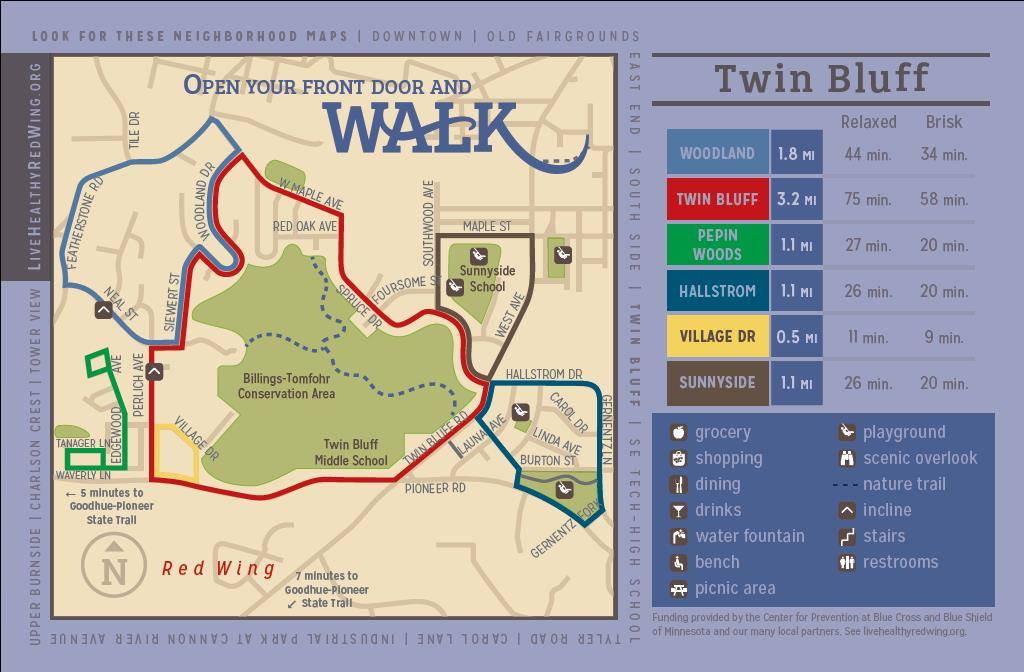
Live Healthy Red Wing Collaborates to Make Scenic River Town a Healthier Place to Live
LHRW is a coalition of leaders from a cross-section of areas in the community including business, school, government and non-profit organizations and their mission is to improve policies, enhance physical surroundings and build a culture of health where every citizen feels heard and connected.
Behind the Scenes
“Everything that we do is focused on equity and health equity,” explained Michelle Leise, community engagement specialist for the city of Red Wing and former LHRW coordinator. “Our question always is, ‘Who can access this?’ We want to make things as easy to access as possible. For that reason, much of our work is grounded in making sure all segments of the community have a voice and are able to communicate their needs with decision-makers in the area.”

Prior to improvements, navigating sidewalks by wheelchair was nearly impossible in some areas.
In evaluating ways to make downtown intersections easier to navigate, LHRW organized a demonstration project where a crosswalk near senior citizen housing was temporarily reconfigured to make crossing more safe and convenient. The elderly residents who frequently use the crosswalk were able to experience how the space could be used differently and offer their feedback.
During the planning phase of a complete reconstruction of Main Street, including multiple crossings that were difficult for pedestrians, LHRW arranged for decision-makers to tour the area in wheelchairs, led by a resident who uses a wheelchair.
“Getting people who are going to make decisions actually out in the space, experiencing the space how someone else experiences it, that’s how we gain input,” said Leise.
LHRW also has been a key partner to Red Wing in the development of a 20-year comprehensive community plan, making sure residents are engaged throughout the process and that health and equity are woven throughout the plan. With the city’s Latino and Hispanic population growing at a fast pace, for instance, understanding that community’s perceptions and needs was important to mapping out Red Wing’s future. LHRW partnered with Hispanic Outreach of Goodhue County to conduct a 45-question in-depth survey with members of the Latino and Hispanic community. A committee of Latino and Hispanic residents and non-Latino/Hispanic residents helped create the questions and will work together to build policy change when the results are analyzed.
“The survey gets at how people are feeling about housing, transportation and education,” said Leise. “It gets at they feel about our government and how accessible our government is. Having people feel invested and valued in the community is so important moving forward, because we all are part of Red Wing.”
Improving the Ability to Walk or Bike Around Town
A major priority for LHRW is to improve conditions for all pedestrian and bicycle activity. The group’s early achievements included restoration of overgrown trails, new access points to trails and revitalizing parks. However, sidewalk infrastructure quickly surfaced as an opportunity. For certain segments of the population – children, the elderly, people with mobility challenges – having well-maintained and accessible sidewalks is vital to their ability to get around town and maintain their social connectedness.

Thirty-three miles of trails have been improved in Red Wing since 2012.
According to the recently released Red Wing Report Card, created by Live Healthy Red Wing with the city and residents, 80 percent of all planned sidewalks are already installed and 50 to 75 sidewalk segments will be improved annually. In addition, 50 vacant lots in developed neighborhoods will receive a sidewalk by 2026.
LHRW’s efforts extend directly to community engagement as well. The group has a long-standing partnership with both the city and school district to secure grants under the Minnesota Department of Transportation’s Safe Routes to School program. One of the more visible results of Safe Routes to School funding is the Bus Stop and Walk program with the school district. Once a week, buses now drop kids off at safe, designated locations so they can walk the last ten minutes to school.
LHRW has also organized Walking Wednesdays, where residents are encouraged to open their front door and join a group walk.
“We provide neighborhood walking maps so people actually know where to go, how difficult a route is and how long it will take,” Leise said. “The maps show residents different routes they can take in their neighborhood and how to get to a bluff trail that’s in their neighborhood.”
The LHRW team was formed approximately eight years ago and with support from the Blue Cross Center for Prevention and has been fulfilling its mission in a variety of ways ever since.
To learn more about how LHRW is impacting its community, visit LiveHealthyRedWing.org.

